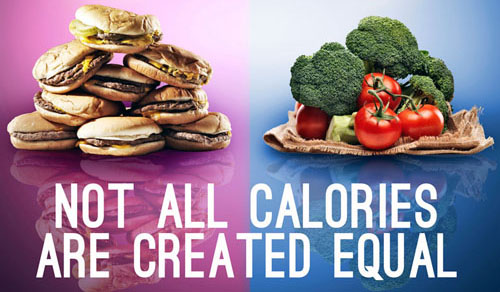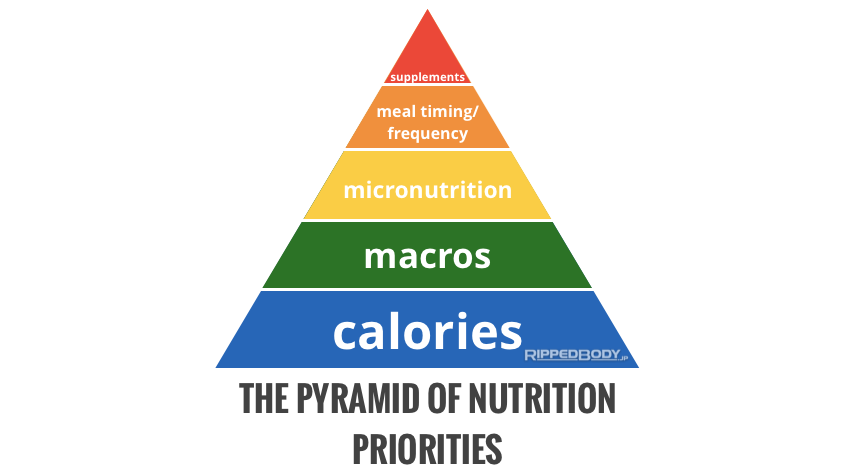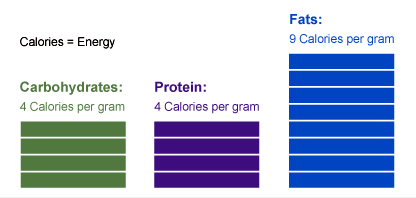When is a calorie not a calorie? Understand why all calories are not the same.


Hey everybody, it’s been a while since I’ve created a nutrition-related post… but the time has come for me to start unloading info off my brain. I’ve been focusing on making YouTube videos to help people with mobility or strength training, but nutrition is just as important in regards to health, especially as one gets older, so I’m happy to be writing about this!
If you’re a long-time reader of my blog, you’ll know that I lost a bunch of fat by simply counting my calories and making sure I was eating less than I needed calorie-wise. I used the app called MyFitnessPal to easily log the foods I put in my mouth to know how many calories I was eating. If I stayed under a specific number of calories on average throughout the week, then I lost weight. If I ate more than I needed, I gained weight. I made a massive blog post about with progress pics, stats and everything I learned from that experience.
As a result of counting calories meticulously for a couple years, I ended up knowing the calories of everything by heart without even needing a food scale anymore. I could now look at a Hass Avocado and know whether it’s 180grams or 220 grams just by looking at it. I could see a piece of chicken or steak and closely estimate how many ounces it is and so forth. (Btw, a food scale is only $10 and very helpful when counting calories!)
So for a very long time, I had the calories in control, to the point of not needing to count calories anymore. But for the most part, I was still eating the Standard American Diet which is very high in carbohydrates/sugar.

Isn’t it weird that the acronym for the stereotypical diet of Americans is SAD? Well, cause it is sad. (And hey, Australians, you are included in this as well.)
I noticed that for all of last year (2015), I seemed to have a blanket of fat around my midsection that was proving difficult to get rid of compared to the previous years. And if I ate at a deficit for too long, I noticed a pattern of joint pains cropping up and my will power was not the same as it was before. Was I getting … old? No way! I was also having issues with binge-eating at night after working out. My initial solution to not overeating late at night was to simply go to sleep an hour or two earlier. That helped tremendously, but the huge light bulb moment was when I realized, the now-extremely obvious pattern: the carbs were making me crave more carbs and making my appetite insatiable.
Let’s review the hierarchy of nutritional priorities

The above pyramid created by Andy Morgan shows that calories are the most important factor in determining someones weight. For example, you could be “eating clean” and be taking supplements (protein powder, caffeine, etc) and play with meal timing (eating within 30 minutes post workout, practicing intermittent fasting, etc) but if weight loss is your goal and the calories are still greater than you’re expending, then you’re still going to gain weight. On the flip-side, it’s true that doing something like intermittent fasting (IF) may help you stay within your caloric goal just by virtue of you limiting the hours which you can eat during the day… but my point is that it’s the reduction for the weight loss to occur in that scenario. And just because you do IF, it doesn’t automatically mean weight loss is guaranteed.
So my point is, the calories still need to be in order. That’s why I like calorie-counting. It pretty much guarantees that I’m going to lose weight if I stay within a goal. It also makes me aware of how often I go for food. What makes me go for food. (What is my trigger?) And how much am I really eating? But, there’s more to appetite and the psychology behind food and food addiction that calorie counting doesn’t address.
All calories are not equal
Calories come from three macronutrients:

As you see above, every gram of fat has more than double the caloric density of carbs or protein. So, it’s easy to shun fat and say, “Oh I can’t eat fat! I’ll get fat if I do! They are so heavy in calories!” and write them off completely thinking it’s going to be very easy to overeat calories if you eat too much fat. But if you’re not eating fat, then you’re most likely eating carbs, which is what the stereotypical diet contains. And here’s the reality beyond just knowing calories per gram:
- Protein and fat are highly satiating. Go ahead, eat that entire avocado which happens to be mostly fat and tell me you’re not feeling substantially full. Fat and protein also take longer to empty out from the stomach so it makes you feel fuller for a longer time.
- Carbs, on the other hand have the opposite effect: Carbs make you crave more carbs. When it comes to refined carbs, they are often-times literally addicting.

The USDA pyramid is a joke

Who in their right mind would recommend 11 servings of BREAD per DAY? That’s a half loaf of bread a day! Bread isn’t even that nutritious! It’s mostly made of refined flour (pure sugar) that they “fortify” or “enrich” with artificially added vitamins and minerals because it’s such a poor source of nutrition to begin with. And those 100-calorie snack packets are a scam! Most of them are pure sugar or high fructose corn syrup (HFCS) which will do nothing but make you more hungry. It’s the overconsumption of sugar/carbs that is contributing to the obesity and diabetes epidemic. The prevalency of massive amounts of carbs in the STANDARD AMERICAN DIET is making people fat!
South Park had an episode where they comically said, “Flip the pyramid upside down and we get the true pyramid.” Turns out, they aren’t too far from the truth, even though it’s supposed to be a comedy.
So with this information in mind, I’ve been refining my diet for the past several months and experimenting with the “ketogenic” diet which is a very low carb diet. I have made fantastic progress in regards to my physique and overall well being.
The interesting thing about this “keto” diet is that even when people are told they could eat however much they want but must practice carbohydrate restriction and replace the carbs with fat, they will tend to naturally eat less calories than they need until their weight stabilizes because they won’t feel hunger as often. Isn’t that interesting? I find it fascinating. It tells us that not all foods and the calories they contain are equal. Some foods blunt appetite while others make your appetite ravenous. And surprise, 80% or more of the items in a super market are almost entirely carbs!

Anyway, I hope this was interesting to you because this post was meant to be the precursor to the next blog post which is about everything I have learned about the ketogenic diet, including how to do it practically and my progress pics! People need to know about this correlation between having a carbohydrate-rich diet and overeating, and why low carb, ketogenic diets can help many people. Keep on reading!






